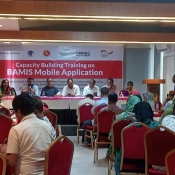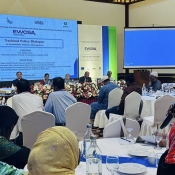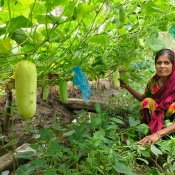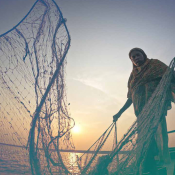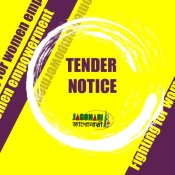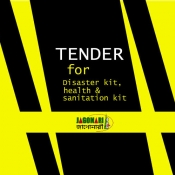Farmers are benefiting from maize cultivation in climate-critical areas on the coast of Bangladesh
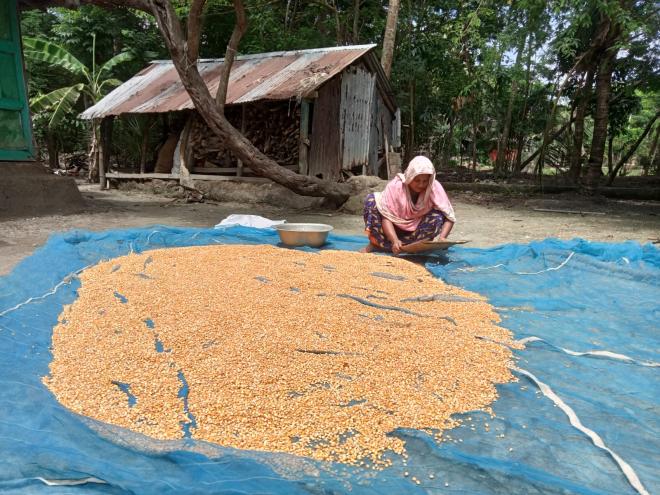
‘I have benefited from maize cultivation in this climate-critical area. I have cultivated maize on 40 percent of my land and have obtained 25 maunds of maize this year. Since it is a drought and salinity-tolerant crop, the crop is gaining acceptance here. It is greatly encouraging farmers in this area to cultivate maize.’ These words were said by farmer Abhi Hawlader. His home is in Dakshin Charpara village of Mithaganj Union of Kalapara Upazila of Patuakhali district. He is a self-employed maize farmer.
Farmer Abhi Hawlader said that JAGONARI’s ‘PRADIPTA Project’ has introduced maize cultivation in this area and encouraged farmers. So that farmers can adapt to the effects of climate change and survive. Another farmer in the area who is benefiting from maize cultivation is Nazrul Islam. This year, he cultivated maize on one bigha of land and got a yield of 30 maunds.
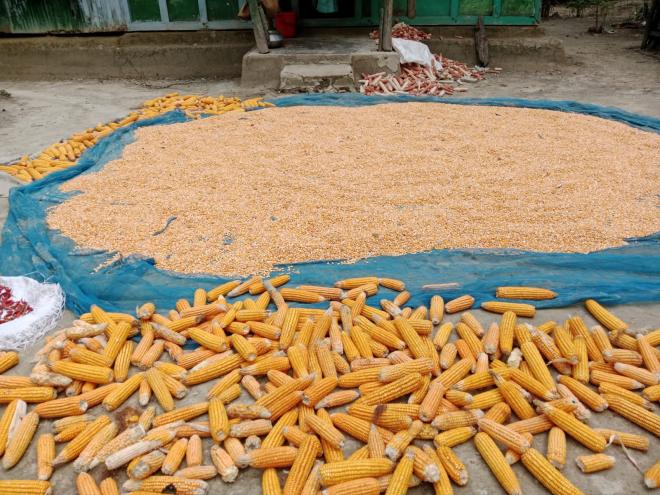
Farmer Nazrul said, “Last year, many farmers in this area benefited from cultivating maize. Inspired by other farmers, I cultivated maize on one bigha of land this year and got a yield of 30 maunds of maize. I have 6 cows and 5 goats. Due to maize cultivation, I can meet the food needs of the cattle using its leaves. Moreover, maize is a crop that requires less water for irrigation. Since our region is a salinity-prone area and there is no opportunity to use groundwater. Therefore, maize is a suitable crop for this coastal region. I am really happy to be able to benefit from cultivating maize. I hope that next year some more farmers will engage in maize cultivation.”
Last year, 68 farmers received assistance from the Pradipta project for cultivating maize. Due to climate change and geographical location, the amount of salinity in the land of the coastal region is high. As a result, agriculture in Kalapara and Rangabali, the special working areas of the region, is under great threat. Keeping this in mind and with the aim of introducing and accelerating the climate adaptive realities of coastal farmers, the project last year provided training and input support to 60 farmers for one bigha of land; who had their own pond/canal irrigation facilities. More or less all the farmers were very active and hardworking. After planting the maize in the land, they were well looked after by timely irrigation, fertilization, pest control as per the guidelines of the project and the Agriculture Department. As a result, an average farmer got 18-20 maunds of maize.
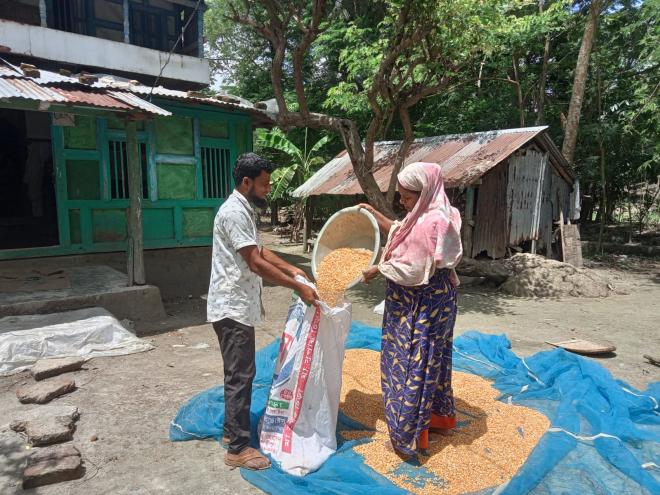
With the experience and enthusiasm of last year, this year 68 farmers have cultivated maize at their own expense using maize seeds of Ispahani Company, BRAC and others. They got an average of 22-25 maunds of maize per bigha. Since maize is a drought tolerant crop and requires less irrigation. On the contrary, corn leaves serve as fodder for cattle, corn plant is used as fuel and is also in good demand in the market. Therefore, interest in corn cultivation in this region is increasing day by day.
Published on: Thursday, 29 May 2025, 08:49 am ▪ Total View of this Page: 291




